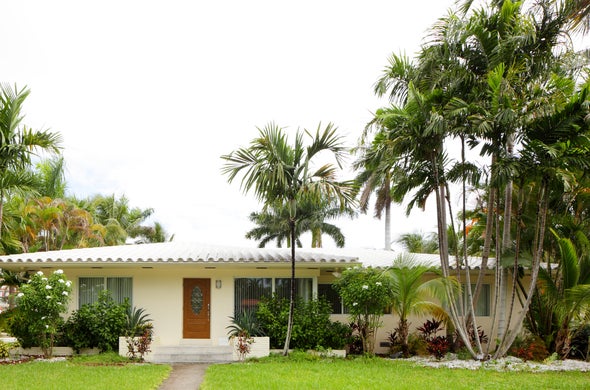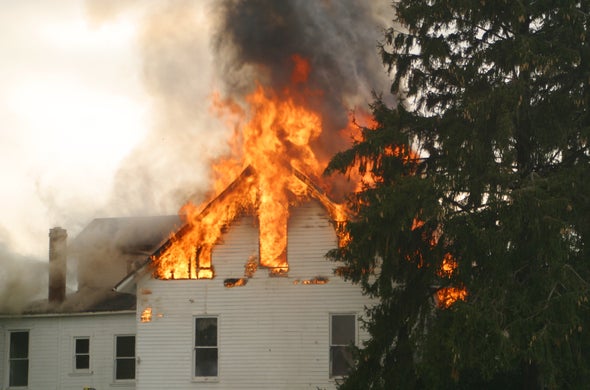Why you'll love Kin
From small claims to disasters, we're here to help you recover quickly.
Here to help
We reach out before and after major weather events to make sure you’re okay — and to assist if you need to file a claim.
24/7 claims support
Easily file a claim over the phone with a member of our support team or online in your Customer Portal.
5-star care
Our licensed insurance experts are available to help via email, phone, or live chat.
What does homeowners insurance cover in Florida?
Rest easy knowing your coverage protects what matters most.
Dwelling coverage
for the actual structure of your home, inside and out.
Other structures
for things like your detached garage or shed.
Personal property
for your personal belongings that make your house a home.
Loss of use
for additional living expenses when a covered loss forces you to temporarily relocate.
Personal liability
if you accidentally cause someone bodily injury or property damage.
Medical payments
if a guest is injured on your property.
Discounts available in Florida
You can save money on home insurance by making investments to protect your home, avoiding damage, and selecting sustainable options.

Home security - for installing security or fire alarms (available for nonmobile homes).
Wind mitigation - the more wind-proof your home, the better.
Water detection - because no one wants a flooded home.
Claims-free - for keeping your home safe over the years.
Electronic policy - for reducing your carbon footprint by saving some paper.
We've got Florida covered.
We help Floridians find coverage across the entire Sunshine State!
We sell policies in every county in Florida, including in these major cities:
Learn more about home insurance with Kin
Common questions about Florida home insurance
What’s the average cost of home insurance in Florida?
The average cost of Florida home insurance premiums is $9,462 per year according to the latest data available from the Consumer Federation of America. That makes Florida the #1 most expensive state for home insurance, with an average premium 186% higher than the national average of $3,303. Homeowners insurance in Florida is expensive because of the high risk of natural disasters such as hurricanes, floods, and sinkholes. Your home’s risks, and the cost of your premium, depend on location and other characteristics.
What factors affect home insurance rates in Florida?
Florida home insurance rates depend on a variety of factors, including:
-
Where you live. Homeowners insurance premiums in Florida vary based on your property’s location, down to the ZIP code.
-
Home’s replacement cost value. A primary driver behind your premium is the estimated cost of rebuilding your home from the ground up if it were destroyed by a covered peril.
-
Safety features. You may see a lower premium if your home is home that’s equipped with safety features, like fire sprinklers or a security system.
-
Past claims. If you’ve filed any home insurance claims in the past, you may pay a higher rate for homeowners insurance. The same may also be true if your property has a history of frequent claims, even if you weren’t living there when they were filed.
-
Types and amount of coverage. The more coverage you have, the higher your premiums. Similarly, you’ll pay slightly more if you have any policy endorsements, like water backup coverage or extended replacement cost coverage.
-
Deductible. Home insurance policies with high deductibles typically have lower premiums, while policies with lower deductibles usually cost more.
-
Credit history. Florida insurers can use your insurance-based credit score to set rates. If you have poor credit, you may see a higher premium.
How much home insurance do I need in Florida?
Every Florida homeowner has different coverage needs, but in general, here’s how much insurance you should have:
-
Dwelling insurance. Your dwelling insurance limit should cover the full cost of rebuilding your home to its original condition after a covered loss.
-
Other structures coverage. Generally set at 10% of your dwelling coverage limit, this covers the cost to rebuild, replace, or repair structures that aren’t attached to your primary residence, such as detached garages, sheds, or pool houses. Depending on the value of other structures on your property, you may need a higher limit.
-
Personal property insurance. Your personal property insurance limit should cover the full cost of replacing your personal belongings, such as furniture, clothing, decor, and small appliances. It’s commonly set at 50% of your dwelling limit. You may need more (or less) based on the value of your belongings.
-
Liability insurance. Choose a personal liability insurance coverage limit that matches or exceeds the value of your personal assets, like investment accounts and real estate.
-
Medical payments insurance. Standard home insurance policies generally provide $1,000 to $5,000 in medical payments insurance to cover a guest’s medical expenses, regardless of who was at fault.
-
Loss of use insurance. This coverage can help you pay for additional living expenses, like lodging, if you need to vacate your home after a covered loss. It’s typically set at 20% of your dwelling insurance limit.
What does home insurance not cover in Florida?
Homeowners insurance in Florida excludes or limits coverage for the following:
-
Damage caused by flooding, including storm surges
-
Damage caused by earthquakes, sinkholes, and other ground shifts
-
Intentional damage caused by the policyholder or a covered household
-
Pest or insect infestations and resulting damage
-
Most cases of mold, mildew, or rot damage
-
Damage that occurs to a property that’s been vacant for an extended period
Keep in mind that policy exclusions and limitations can vary by insurer and product. Always discuss coverage details with your insurer.
What additional coverages should a homeowner consider in Florida?
There are a few additional coverages that can be beneficial for Florida homeowners. Consider these endorsements or stand-alone policies if you live in the Sunshine State:
-
Flood insurance. Flood insurance can be a good investment for many Florida homeowners, even if you don’t live near the coast. If you have a mortgage and live in a flood zone, your lender may require you to carry flood insurance.
-
Water backup insurance. This endorsement covers damage to the structure of your home and personal items if water backs up into your house through a clogged sewer or, failed sump pump.
-
Extended replacement cost coverage. This common policy endorsement will extend your dwelling coverage limit by a specific amount, such as 25%. It’s often a good option if you live in an area prone to natural disasters, where labor and material costs can surge after a disaster event.
-
Ordinance or law coverage. Pays for the extra costs to bring your home up to current Florida building codes after a covered loss, which is often excluded from standard policies. It may be especially valuable for older homes or those in areas with strict hurricane-related regulations.
Is home insurance required in Florida?
No, homeowners insurance isn’t legally required in Florida. However, if you financed your home, your lender will likely require you to carry coverage for the duration of the loan.
Even if you aren’t required to carry coverage, it’s often a good idea to have a home insurance policy in place. A standard Florida home insurance policy can provide financial protection for your property and belongings after a covered event. Without it, you’ll likely need to pay out of pocket to repair, replace, or rebuild your property.
Home insurance can also provide personal liability protection, including covering legal fees if you are sued due to a covered incident, such as being at fault for injuries sustained by a guest or damaging a third party’s property.













